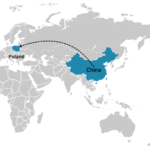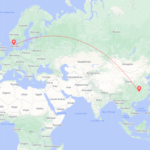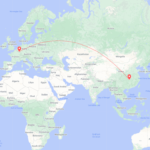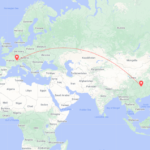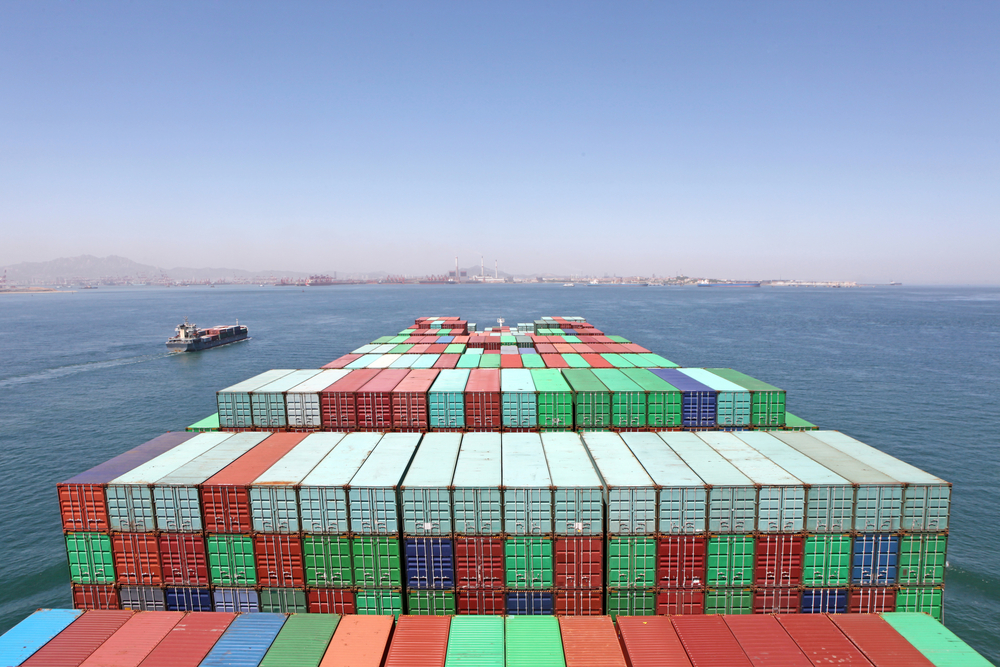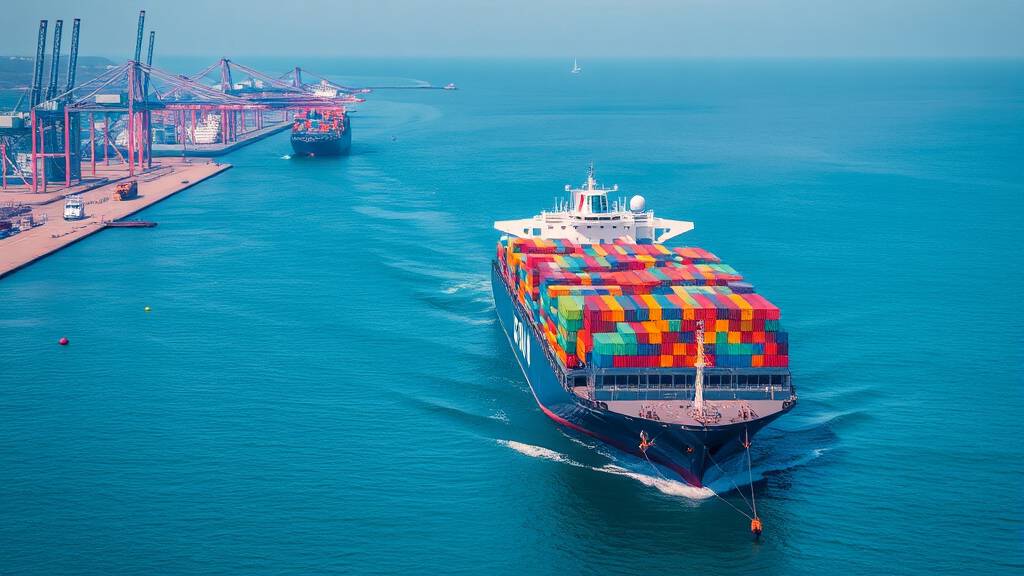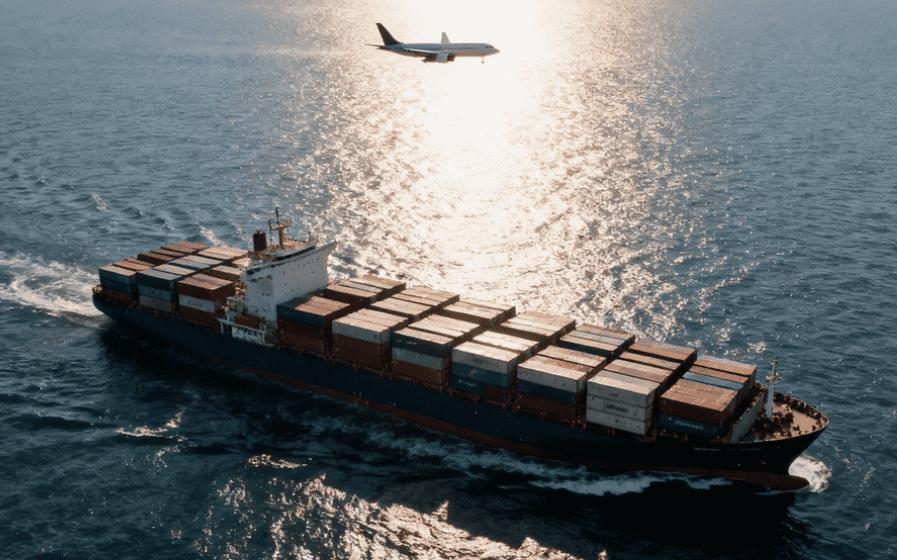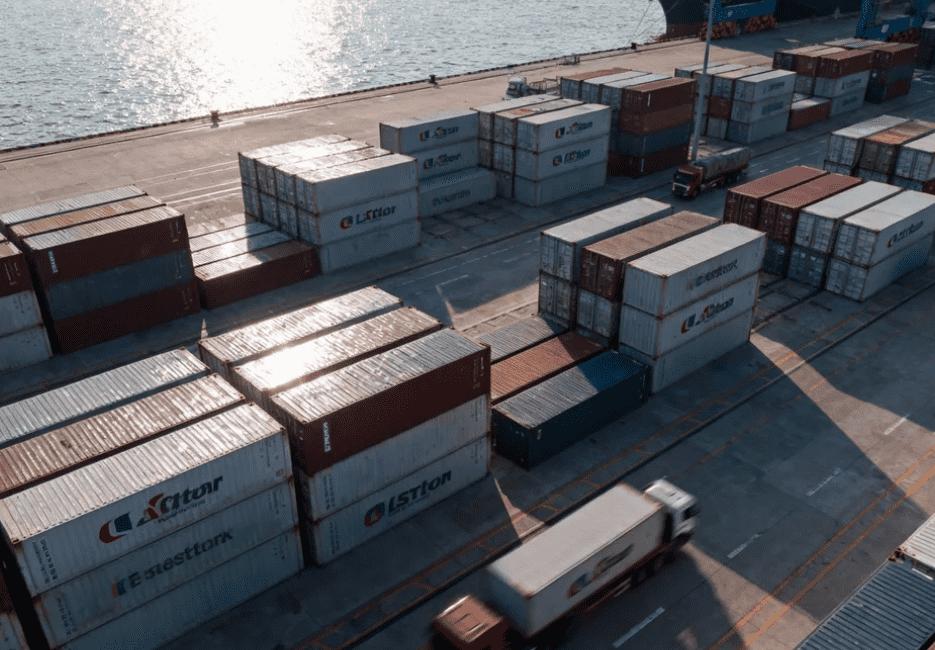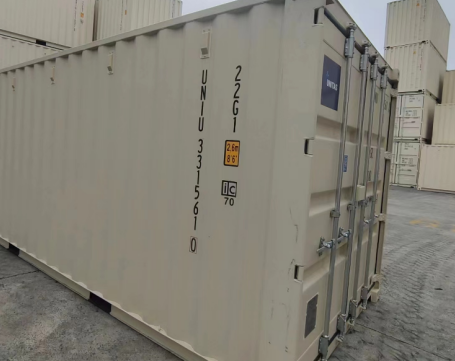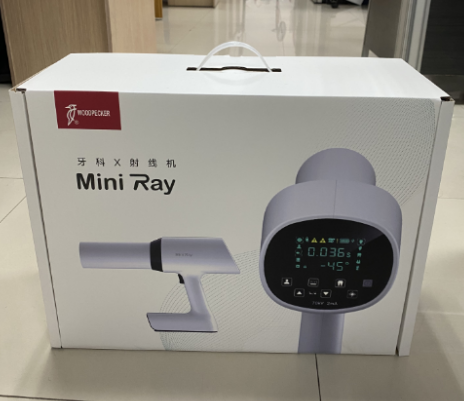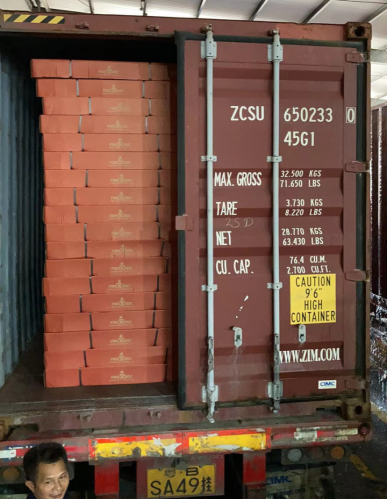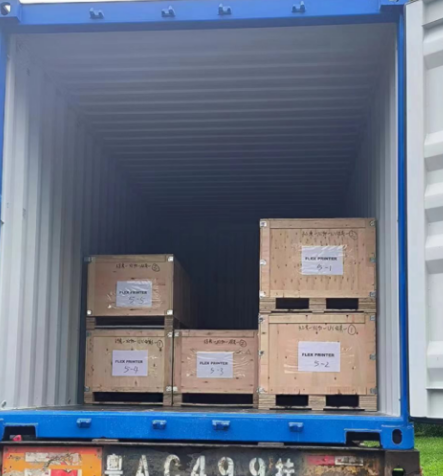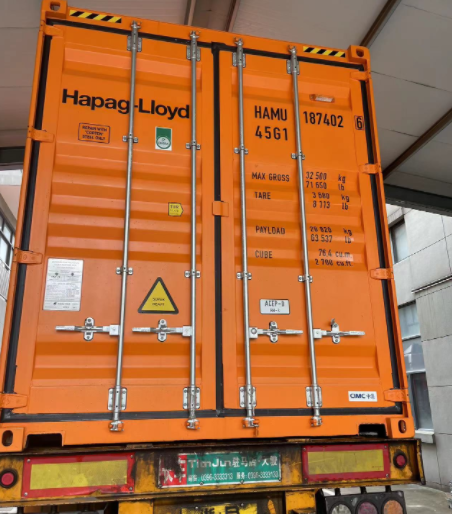Are you aware of the shipping rates from China to Poland and how they can impact your import business?
In this comprehensive guide, we will delve into the various factors influencing shipping costs, including the choice between air and sea freight. We will also explore additional costs that may arise and provide strategies to minimize expenses. By the end of this article, you’ll be equipped with the knowledge needed to navigate the complexities of international shipping and make informed decisions for your operations.
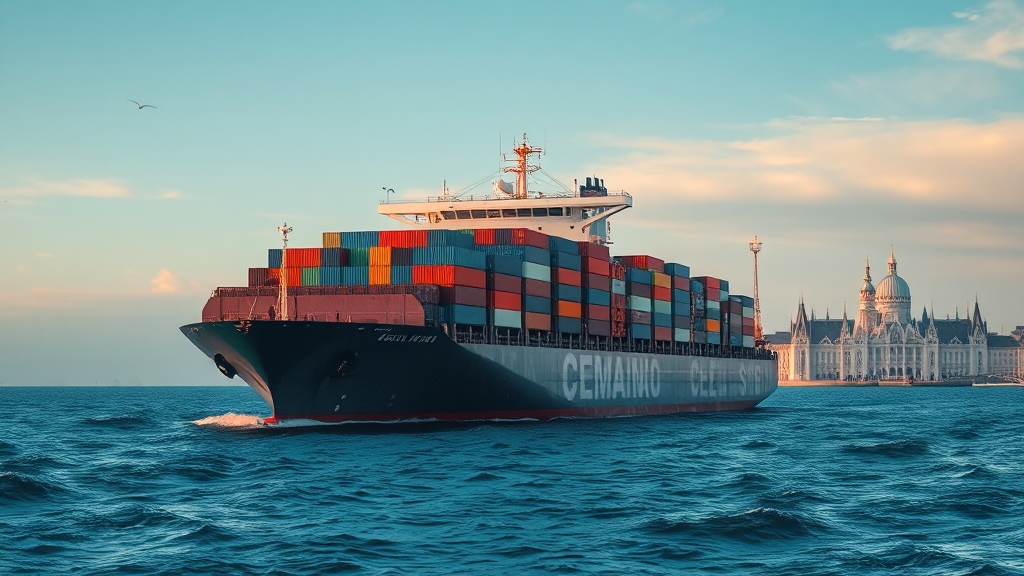
Understanding Shipping Rates from China to Poland: Key Insights
Overview of Factors Influencing Shipping Costs from China to Poland
When importing goods from China to Poland, several factors play a crucial role in determining the overall shipping costs. Understanding these factors can help businesses make informed decisions and manage their expenses effectively.
Shipping Mode: The choice between Air Freight and Sea Freight greatly impacts shipping rates. Air Freight tends to be faster but is usually more expensive, while Sea Freight is more cost-effective for larger shipments but involves longer transit times.
Distance and Route: The geographical distance between the port of origin in China and the destination port in Poland also affects shipping costs. For instance, shipping from Shanghai to the Port of Gdansk may have different rates compared to shipping from Shenzhen to Krakow.
Fuel Prices: Fluctuating global fuel prices can significantly influence shipping rates. Increased fuel costs typically translate to higher freight charges for both air and sea transport.
Demand and Supply: Seasonal demand and supply chain dynamics can lead to variations in shipping costs. For example, during peak seasons like the holiday rush, rates may surge due to increased demand for cargo space.
Customs and Duties: Import duties, taxes, and customs clearance fees applicable in Poland can add to the overall cost. It’s essential to factor these into the budget when calculating total shipping expenses.
Cargo Characteristics: The nature of the cargo—including weight, volume, and value—also affects shipping rates. Heavier or oversized packages typically incur higher charges.
Understanding these factors will enable businesses to better anticipate shipping expenses when importing from China to Poland.
Importance of Shipping Mode Selection for Cost-Effective Imports
Selecting the right shipping mode is vital for achieving cost-effective imports from China to Poland. Here’s why:
Cost Efficiency: Sea Freight is the most cost-effective option for large volumes of goods. If you are importing bulk items, this mode can significantly reduce shipping costs compared to Air Freight.
Speed and Urgency: If time is of the essence, Air Freight is the way to go. It is faster and ideal for high-value or perishable goods, despite being more expensive.
Flexibility in Shipment Size: Air Freight allows for the shipment of smaller volumes, which can be beneficial for businesses that require a Just-In-Time (JIT) inventory system. Conversely, Sea Freight is more suited for larger shipments.
Risk and Insurance: The shipping mode chosen may also affect the risk factors associated with transport. Air Freight generally has lower risk of damage during transit due to shorter shipping times, but it is essential to consider insurance options for both modes to protect your investment.
In summary, the selection of the shipping mode should align with your specific business needs, budget, and timeline to facilitate a seamless import process from China to Poland.
Air Freight Costs for Shipping from China to Poland
In-Depth Analysis of Air Freight Pricing for Polish Destinations
Air freight rates from China to Poland are influenced by several factors, including the weight of the cargo, the nature of the goods, and the urgency of shipments. Here is a breakdown of typical air freight costs:
| Weight Category | Estimated Cost (USD/kg) | Delivery Time (Days) |
|---|---|---|
| 0-100 kg | $5.00 – $8.00 | 3-5 |
| 100-500 kg | $4.50 – $7.00 | 3-5 |
| 500 kg and above | $4.00 – $6.00 | 3-7 |
Note: These figures are indicative and may vary based on airline, demand, and specific routes. For the most accurate quotes, consider consulting with a professional freight forwarder like Dantful International Logistics.
Benefits and Drawbacks of Air Freight for Importing from China
Benefits:
- Speed: Air freight is the fastest shipping method, making it ideal for urgent shipments.
- Reliability: Airlines generally operate on tight schedules, providing a more predictable delivery timeline compared to sea freight.
- Lower Risk of Damage: The shorter transit time associated with air freight reduces the likelihood of damage to goods.
Drawbacks:
- Higher Costs: Air freight is significantly more expensive than sea freight, making it less suitable for bulk shipments.
- Weight Limitations: Airlines impose strict weight limits, which could constrain shipping options for heavier items.
- Limited Cargo Types: Certain goods, such as hazardous materials, may not be eligible for air transport due to regulatory restrictions.
In conclusion, while air freight offers speed and reliability, businesses must assess their specific needs and budget constraints when considering this option for importing from China to Poland. For comprehensive air freight solutions, Dantful International Logistics provides tailored services to enhance your import experience.
Sea Freight Costs for Shipping from China to Poland
Detailed Breakdown of Sea Freight Charges for Polish Imports
When it comes to shipping goods from China to Poland, sea freight is one of the most economical options, especially for bulk shipments. Understanding the various components of sea freight charges can help importers better plan their logistics and budget.
Freight Charges: This is the basic cost for transporting goods by sea, which is typically calculated based on the shipping container’s size (20-foot, 40-foot, or 40-foot high cube) or weight. Prices can fluctuate significantly based on market demand, fuel prices, and shipping routes. As of October 2023, average costs for shipping a 40-foot container from Shanghai to Gdansk can range from $1,200 to $2,500.
Port Charges: These include fees for loading and unloading cargo at ports, which can vary by port. For instance, the Port of Gdansk has specific handling charges that can affect overall shipping costs.
Customs Duties and Taxes: Import duties in Poland depend on the type of goods being imported, their value, and their classification. It’s essential to check the European Union tariff codes relevant to your products to estimate these costs accurately.
Insurance Costs: While not mandatory, purchasing cargo insurance is advisable to protect against loss or damage during transit. Rates vary, typically around 0.5% to 2% of the cargo value.
Transport to/from Port: This includes local transportation costs for getting your cargo to the port in China and from the port in Poland to your final destination. This cost can fluctuate based on distance and logistics services chosen.
The following table summarizes typical sea freight charges from China to Poland for a 40-foot container:
| Route | Estimated Freight Cost (USD) | Port Charges (USD) | Insurance (USD) | Total Estimated Cost (USD) |
|---|---|---|---|---|
| Shanghai to Gdansk | $1,200 – $2,500 | $200 – $400 | $50 – $150 | $1,450 – $3,050 |
| Shenzhen to Gdansk | $1,300 – $2,600 | $200 – $400 | $50 – $150 | $1,550 – $3,150 |
Why Sea Freight is Ideal for Bulk Shipments from China
Sea freight is particularly suitable for bulk shipments for several reasons:
Cost-Effectiveness: Sea freight is significantly cheaper than air freight when shipping large volumes. As shown in the table above, the cost per unit decreases as the shipment size increases, making it ideal for businesses looking to import large quantities.
Capacity: Shipping containers can carry substantial amounts of goods, which is beneficial for businesses looking to save on per-item shipping costs. This is particularly advantageous for manufacturers or wholesalers who require large inventory volumes.
Environmental Impact: Compared to air freight, sea freight has a lower carbon footprint per ton of cargo transported, making it a more environmentally friendly option.
Suitable for Non-Perishable Goods: If you’re shipping non-perishable items, sea freight allows for longer transit times without the risk of spoilage, making it a practical choice for many businesses.
Flexibility: Sea freight services often offer various shipping schedules and routes, providing flexibility to accommodate different shipping needs.
In summary, sea freight remains the preferred method for businesses importing goods from China to Poland, particularly when shipping in bulk, due to its cost-effectiveness and capacity advantages.
Read More:
- Shipping From China To Netherlands
- Shipping From China To Spain
- Shipping From China To Germany
- Shipping From China To France
- Shipping From China to Italy
- Shipping From China To Poland
- Shipping From China to United Kingdom
Additional Costs to Consider When Shipping from China to Poland
Exploring Hidden Fees and Charges in Your Shipping Budget
When budgeting for shipments from China to Poland, it is crucial to account for several hidden fees that could inflate costs unexpectedly. Here are common hidden fees to be aware of:
Documentation Fees: Charges for necessary paperwork such as bills of lading, customs clearance documents, and certificates of origin can add up. These fees typically range from $50 to $150.
Duties and Taxes: Apart from customs duties, your shipment may encounter VAT or excise taxes depending on the nature of the goods imported. Importers should verify applicable rates.
Handling Charges: Port and terminal handling fees may apply, especially if your cargo requires special handling (e.g., oversized freight).
Demurrage and Detention Fees: These fees occur when containers are not returned to the shipping line within the allotted free time. Make sure to understand the terms to avoid unnecessary charges.
Broker Fees: If you use a customs broker to handle customs clearance, additional broker fees may apply. These services are invaluable for ensuring compliance with EU import regulations.
Understanding the Impact of Package Weight and Volume on Costs
The weight and volume of your shipment play a significant role in determining shipping costs. When calculating shipping fees, freight forwarders often use either the actual weight or the dimensional weight (volumetric weight) of the cargo, whichever is greater.
Actual Weight: This is the physical weight of the shipment.
Dimensional Weight: This is calculated based on the dimensions of the cargo. For example, if a shipment is bulky but lightweight, the freight forwarder will charge based on the dimensional weight to account for the space it occupies on the ship.
The formula for calculating dimensional weight is as follows:

Understanding the impact of both actual and dimensional weights is essential for optimizing shipping costs. By packaging goods efficiently, importers can reduce their shipping expenses significantly.
In conclusion, being aware of all potential costs and how they are calculated will help you create a more accurate budget and strategy for shipping goods from China to Poland. Partnering with a reliable freight forwarder, such as Dantful International Logistics, can provide expert guidance on navigating these costs effectively and ensuring a smooth shipping process.
Finding Reliable Freight Forwarders for Shipping from China to Poland
Key Qualities to Look for in a Freight Forwarder for Polish Imports
When selecting a freight forwarder for shipping goods from China to Poland, it is essential to consider several key qualities that can significantly impact your import experience.
Experience and Expertise: Look for a freight forwarder with extensive experience in handling shipments from China to Poland. They should possess knowledge of the specific regulations, customs procedures, and logistics challenges associated with both countries.
Comprehensive Services: A reliable freight forwarder should offer a full range of services tailored to your needs, including Ocean Freight, Air Freight, Customs Clearance, Insurance, and Door to Door delivery. This ensures that you have a one-stop solution for all your shipping requirements without dealing with multiple providers.
Transparent Pricing: Choose a freight forwarder who provides clear pricing structures with detailed breakdowns of costs. This transparency helps you to avoid unexpected fees and allows for more accurate budget planning.
Strong Network: A reputable freight forwarder should have an established network of partners and agents in both China and Poland. This network can facilitate smoother customs clearance and timely delivery, ensuring your shipments arrive on schedule. To learn more about the advantages of working with freight forwarding experts, check out our guide on freight forwarders.
Customer-Centric Approach: Excellent customer service is crucial. A responsive freight forwarder should be easy to communicate with, providing ongoing support and updates throughout the shipping process.
Technology Utilization: Modern freight forwarders should leverage technology for tracking shipments and managing logistics. An online portal or tracking system can enhance visibility and improve communication regarding your goods’ status.
At Dantful International Logistics, we embody these key qualities, offering highly professional, cost-effective, and high-quality logistics services tailored for global traders.
Building Long-Term Relationships with Freight Forwarding Experts
Establishing a long-term partnership with your freight forwarder can greatly benefit your shipping operations. Here are some tips for building these relationships:
Open Communication: Maintain regular communication with your freight forwarder. Discuss your shipping needs, changes in volume, and any specific challenges you face. This openness fosters collaboration and enables your forwarder to provide better solutions.
Feedback Loop: Provide constructive feedback on the services rendered. This not only helps the forwarder improve but also shows that you value their efforts.
Understanding Each Other’s Business: Take the time to understand your freight forwarder’s business model and challenges. A mutual understanding can lead to better cooperation and more flexible arrangements.
Trust and Reliability: Consistently rely on your freight forwarder for your shipping needs. Building trust over time can lead to better rates, improved service, and preferential treatment during busy seasons.
Long-Term Contracts: If feasible, consider entering into a long-term contract with your freight forwarder. This can often result in better rates and service levels as both parties become more invested in the relationship.
Strategies to Minimize Shipping Rates from China to Poland
Effective Methods for Cost-Reduction in Shipping from China
Consolidation of Shipments: If you frequently import, consider consolidating multiple smaller shipments into one larger shipment. This can significantly reduce overall shipping costs as freight rates are often lower for bulk shipments. For more information on consolidation, visit our consolidated freight shipping page.
Negotiate Rates: Don’t hesitate to negotiate shipping rates with your freight forwarder. Building a long-term relationship can give you leverage to secure better pricing.
Optimize Packaging: Work on optimizing your packaging to reduce weight and volume. This can lower shipping costs, as most freight costs are based on dimensional weight.
Choose the Right Shipping Mode: Analyze your shipping requirements to determine the most cost-effective mode of transport. For example, if time is not a critical factor, opting for Sea Freight instead of Air Freight could lead to substantial savings. For sea freight options, check our Sea Freight From China to Poland service.
Timing Your Shipments: Best Practices for Lower Costs
Avoid Peak Seasons: Shipping costs tend to rise during peak seasons, such as around holidays or major shopping events. Planning shipments during off-peak times can help you reduce costs.
Book in Advance: Whenever possible, book your shipments in advance. This not only gives you more options but can also lead to lower rates as forwarders often offer discounts for early bookings.
Stay Informed of Market Trends: Regularly monitor market trends and shipping rates. Being aware of fluctuations can help you time your shipments for the best rates.
Utilize Freight Forwarding Expertise: Work with your freight forwarder to time your shipments effectively. They can provide insights into the best times to ship based on current market conditions and historical data.
By implementing these strategies, you can significantly minimize shipping rates from China to Poland, allowing you to enhance your import operations and improve overall profitability. At Dantful International Logistics, we specialize in helping businesses navigate these complexities with efficiency and cost-effectiveness. For more details on our services, visit Dantful International Logistics.

Young Chiu is a seasoned logistics expert with over 15 years of experience in international freight forwarding and supply chain management. As CEO of Dantful International Logistics, Young is dedicated to providing valuable insights and practical advice to businesses navigating the complexities of global shipping.





